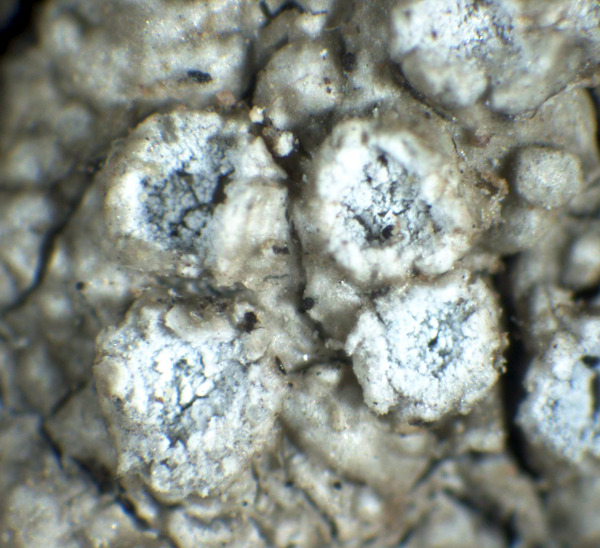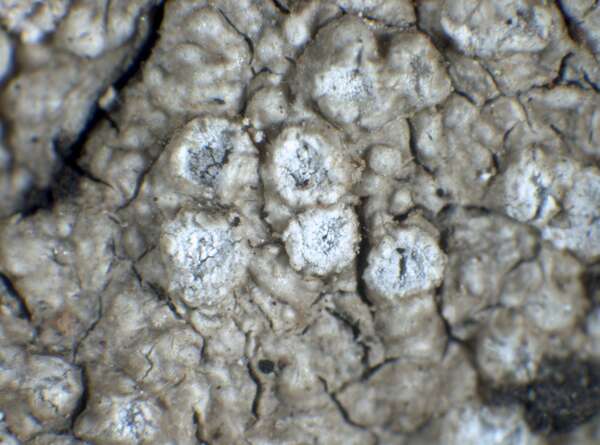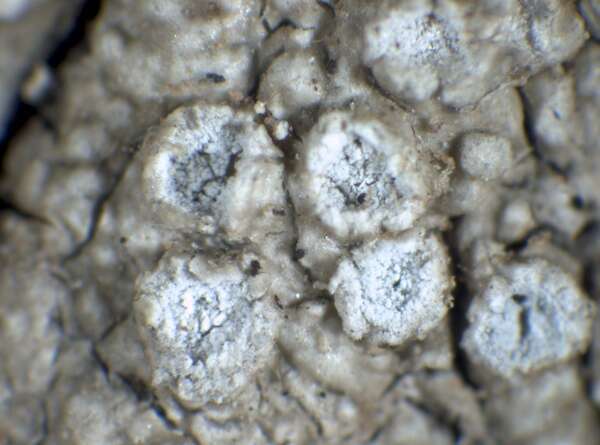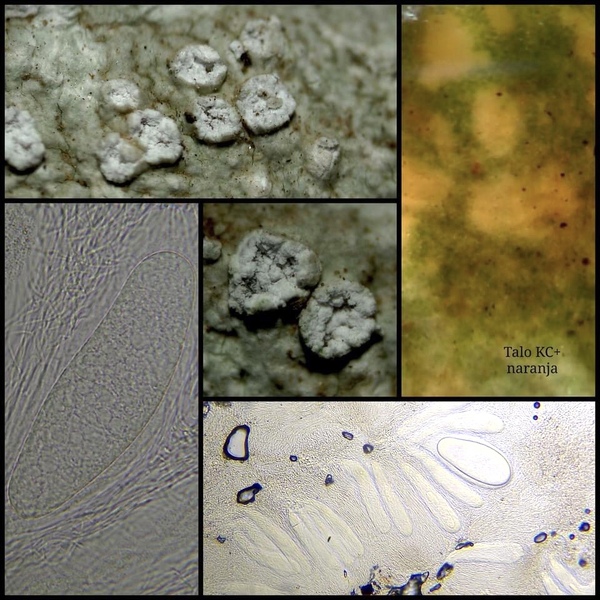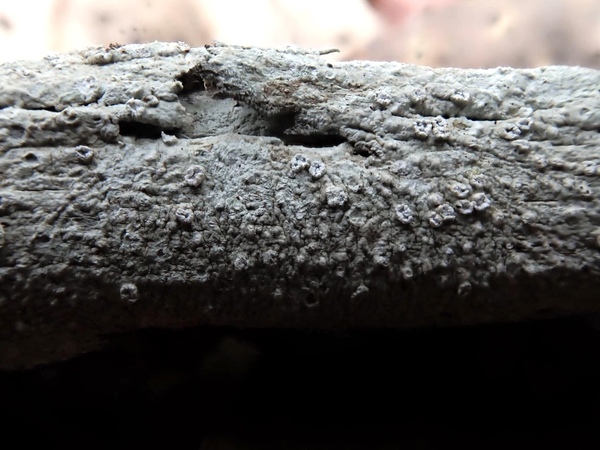Pertusaria pruinosa Kremp.
Verh. k. k. zool.¬bot.Ges. Wien 18: 326, 1868.
Synonyms: Pertusaria corinthiaca Erichsen ?; Pertusaria ilicicola Harm. ?; Pertusaria caesioalba auct. non (Le Prév. ex Duby) Nyl.; Thelotrema pruinosum auct.
Distribution: S - Cal (CLU 6090), Si (Grillo & al. 2007).
Description: Thallus crustose, thinly episubstratic, white to grey-white, sometimes with a yellow-brown tinge, continuous or rimose. Apothecia numerous, immersed into 0.5-1 mm wide fertile warts, 1-5 per wart, at first punctiform, then crateriform, not constricted at base, 0.5-1.5 mm across, with a black, but densely white-pruinose disc and a prominent, often cracked thalline margin. Epithecium brownish, K+ and N+ violet; hymenium colourless, 250-300 µm high; hypothecium colourless. Asci 1-spored, broadly cylindrical, the apex with a broad ocular chamber, the outer sheath K/I+ blue, otherwise K/I-, with an inner extensible layer, Pertusaria-type. Ascospores 1-celled, hyaline, narrowly ellipsoid, (150-)170-190(-220) x (50-)60-80(-100) µm, double-walled, the wall (8-)10-15 µm thick, with subtle transversal striations. Photobiont chlorococcoid. Spot tests: thallus K- or K+ pale yellow, C-, KC+ yellow-orange P-, UV+ orange. Chemistry: 2'-O-methylperlatolic acid (major), plus variable amounts of thiophaninic acid.Note: a mainly Mediterranean lichen, widespread, but rare in the Mediterranean Region, mostly on smooth bark. The record from Sardinia by Zedda & Sipman (2001) was due to a misidentification and actually refers to Lepra ophthalmiza (Sipman in litt.). For nomenclatural matters see Arcadia (2019). It is included in the Italian red list of epiphytic lichens as “Critically Endangered” (Nascimbene & al. 2013c).
Growth form: Crustose
Substrata: bark
Photobiont: green algae other than Trentepohlia
Reproductive strategy: mainly sexual
Most common in areas with a humid-warm climate (e.g. most of Tyrrenian Italy)
Poorly known taxon in need of further study
Commonnes-rarity: (info)
Alpine belt: absent
Subalpine belt: absent
Oromediterranean belt: absent
Montane belt: absent
Submediterranean belt: absent
Padanian area: absent
Humid submediterranean belt: absent
Humid mediterranean belt: very rare
Dry mediterranean belt: extremely rare

Predictive model
Herbarium samples
Growth form: Crustose
Substrata: bark
Photobiont: green algae other than Trentepohlia
Reproductive strategy: mainly sexual
Most common in areas with a humid-warm climate (e.g. most of Tyrrenian Italy)
Poorly known taxon in need of further study
Commonnes-rarity: (info)
Alpine belt: absent
Subalpine belt: absent
Oromediterranean belt: absent
Montane belt: absent
Submediterranean belt: absent
Padanian area: absent
Humid submediterranean belt: absent
Humid mediterranean belt: very rare
Dry mediterranean belt: extremely rare

Predictive model
| Herbarium samples |
 INDEX FUNGORUM
INDEX FUNGORUM
 GBIF
GBIF
